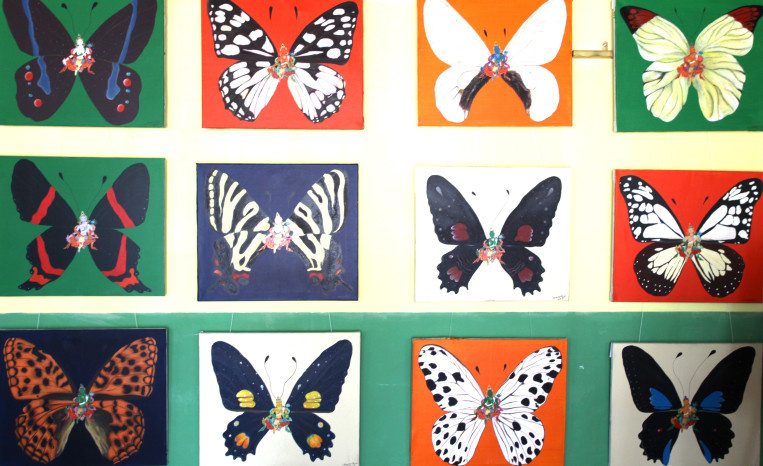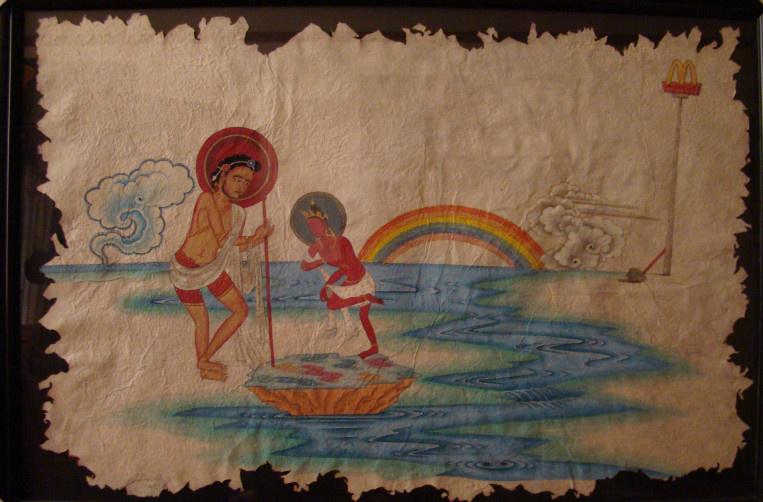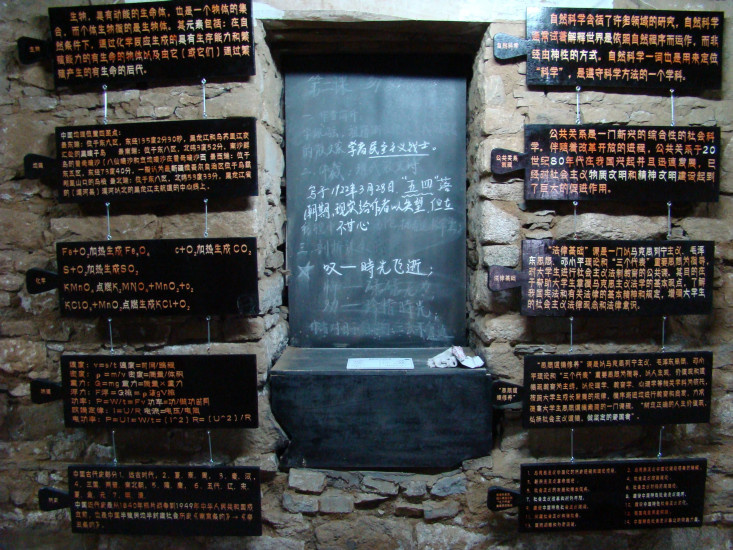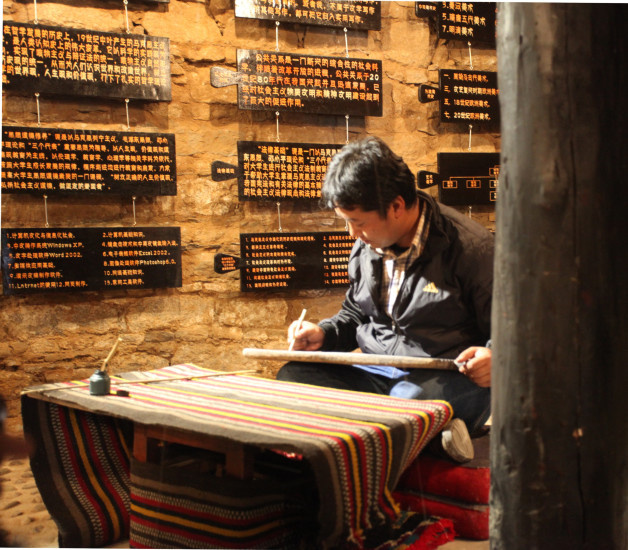Kalnor's show titled 'Jhangshing' opened at the Melong Art Space in Lhasa on October 16, 2011, and was scheduled to run for 14 days. However, within hours of it's opening, it was ordered closed by local officials. The above 4 images and the writing below was brought back by a tourist from Lhasa.
“Jhangshing” Kalnor’s Solo Art Exhibition
Tibet is land of mystery not only geographically but also culturally. People all over the world appreciate and admire the unique traditional culture flourished over many centuries on this high plateau also know as the land of snow.
It is indisputable that tradition of a place is recognized as one of the crucial elements for richness and evolution of humanity as a whole.Being a modern young artist, tradition of my native land is a thing I can’t avoid to ponder upon .Tradition of Tibet has been a source of inspiration and object of muse for about 30 years since my love for art transformed from a sheer curiosity into an indispensable part of myself .My whole approach toward art has been founded on tradition, imitating my farther’s handwriting on wooden slate and later on copying mural and traditional painting of various style composed an important part of my life. This factor remained as important driving force for my artistic career even after the modern education I received under the benevolent communist party policy since 1980s. I have been fortunate enough to have meet all those great teachers since then in 20 years time, up to the stage where I was qualified a degree of M.A.in art.
As a simple yet indispensable part of Tibetan Culture life, countless people had used “Jhangshing” as a writing tool at one point in their live when they first learned to write Tibetan up to recent history of Tibet. For me it carried a special significance and symbol for it lost its place in our society like many other things that disappeared before our eyes. My endeavor for mounting this solo show is to pay homage to this tittle tool and our traditional culture on whole apart from dealing with my sense of nostalgia and urgency on the issue of disappearance, transformation and changes.
With this comes my obligation to introduce what a “Jhangshing”means and how it was used .
“Jhangshing”is a rectangular shaped wooden slate commonly made from walnut or various other hardwood available in Tibet. Measuring about 50 centimeter in length and 5 centimeter in width .Its surface is smoothened and applied black ink. A student who writes on the slate needs to first prepare white lines by hitting the string from a chalk bag on the surface of the slate. This follows by writing with bamboo pens cut into nibs of different sizes suitable for various font rudimentarily practiced on “Jhangshing”. The ink that best fit for the wooden slate is mix of water and sticky tar accumulated on brims and chimney of kitchens.When writing on “Jhangshing”it was customary that students sit crossed legend and cultivate the discipline of patience and humility by repeating a procedure that involves preparation, practice and erasure of one’s writing with water .
As a unique form of tradition not seen in other part of world, writing on “Jhangshing”had been efficient way of training students in their basic handwriting before they were eligible to write on papers.Yet, due to major changes and shift that occurred to our society, 'Jhangshing”has become an unfamiliar object just like we are alienated from many other things that are traditionally local and indigenous
Being part of this huge shift and changes in our culture and environment what my ability allows is to mount an art exhibition that hopefully rings out my personal concern and urgency on the matter.
Several people have been instrumental in organization this show. Mr. Pasang Dhundrup,manager of Tibet Fuming Energy Enterprise fund this Exhibition .Melong Art Space has provided me the free space and Gedunchoephel artists’ guild for its support .Finally ,my thanks to Mr. Badu ,my family and friends for their support .
Lhasa ,October 2011




